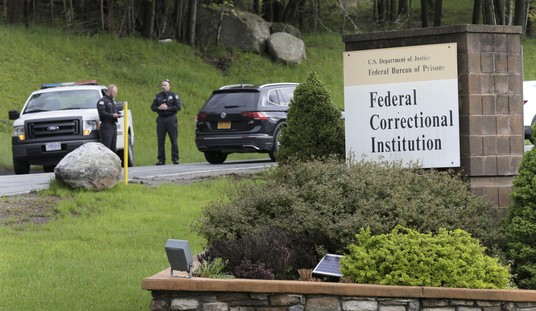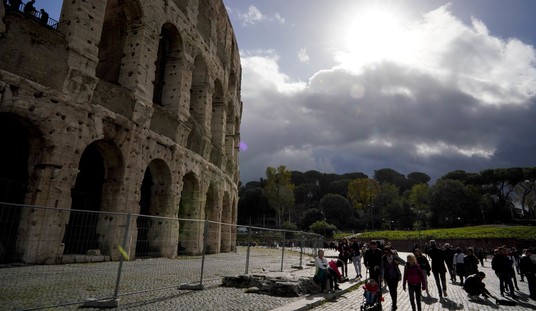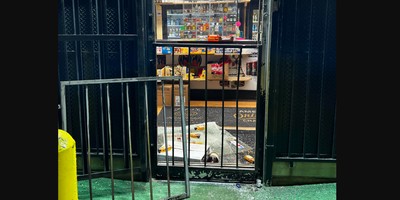Welcome to summer in the American ghetto. In large urban centers, Memorial Day weekend rang in the unofficial start of summer with a spate of killings in major cities. Eight dead with 30 wounded by gunfire in Chicago, four dead with nine wounded in D.C., and three dead with 12 wounded in Milwaukee.
Unfortunately, city officials responded in a predictable fashion – commitment to more police patrols, public relations campaigns to end the violence, and candlelight vigils at the scene of the carnage. Despite all of this, the violence continues. Americans deserve pragmatic and successful policy solutions from their communities, not status quo talking points from the left. As President Trump recently tweeted, leftist policies aren’t working in Chicago and it’s time to let the police do their jobs.
When you see this level of violence it is evidence that social order has collapsed in said areas. In other words, we must look at what prompted the shootings in the first place. In these cases, it was prompted by cultural rot in the form of dysfunctional behavior. Behavior like gang involvement, drug and alcohol abuse, ineffective parenting, lack of engaged fathers, and poor education are a handful of situations that breed dysfunctional behavior. Criminals take property by force, settle inane disputes with gunfire and intimidate their neighbors. It’s the law of the jungle where people foolishly react to circumstances instead of using rational thought to settle disputes.
The worst part? America’s criminal justice system has become a revolving door for violent repeat offenders. Once released, these offenders commit crimes before the ink dries on their police reports. In observance of the flaws in our justice system, they reason that not much will happen to them and that city officials are powerless to stop them. In essence, their calculation is correct – city officials target the wrong things.
Recommended
After the violence in the nation's capital this past weekend, D.C. Metropolitan Police Chief Peter Newsham said he plans to reach out to federal partners to “re-strategize” about how to target illegal guns, which he believes is at the heart of the violence. He’s wrong.
Police leaders seem perplexed about what to do. They increase police patrols in high crime areas, they set up gun buyback programs and establish hotlines for people to call about illegal guns. They have swallowed the hook, line and sinker of the anti-gun movement’s misguided belief that if you target guns, the violence will disappear.
If the gun was the cause of violence then gun violence would be evenly distributed across demographics among the gun owning population. However, that isn’t the reality.
Most of the crime is centered in the American ghetto. The average gun owner does not use a gun to take somebody’s property by force, settle a dispute or intimidate their neighbors.
According to the FBI’s Uniform Crime Reporting, black suspects make up 52 percent of arrests in homicides, 50 percent of robbery arrests, 32 percent of arrests for aggravated assaults and 41 percent of arrests in weapon carrying/possession. To put it into perspective, blacks make up about 13 percent of the total U.S. population but are disproportionately the perpetrators in these criminal acts. It may be an ugly fact to some but it is the reality of violent crime.
It’s a swing and a miss to target guns. Instead, we should target violent career criminals and their anti-social behavior. We shouldn’t take politically correct policy advice from the same leftists that have failed to deter crime.
Rather, there are a handful of new approaches we should take to make America safe. We must identify repeat perpetrators by their long rap sheets. Send out teams of officers to arrest everyone out on outstanding felony warrants. Arrest probation and parole offenders for the slightest violation of their probation or parole. Follow-up with quality debriefings by investigators to determine the associates of perpetrators and the vehicles they own. Prosecute offenders and keep them locked up for the longest period allowed by law, keeping neighborhoods safe. Set high bail and stop liberal programs like community corrections and second chances for repeat offenders. Send felons who use a gun in commission of a crime to the Department of Justice for prosecution because federal guidelines for sentencing are longer and more certain. Stop accepting plea bargains in exchange for weak sentences. The reality is that these policy alternatives are effective crime control tools.
How many Americans in Chicago, D.C., and Milwaukee will be killed by violent offenders until leftist politicians realize their criminal justice policies have failed us all?
Unfortunately, it’s difficult to push back against the status quo. In order for my proposed strategy to work, police commanders must be able to empower and support front line officers. Law enforcement officers have been emasculated and defanged in the assault by the cop-hating crowd that has risen since the incident in Ferguson, Missouri. America needs officers to once again engage in assertive policing that keeps crime and violence in check. Policing tactics such as traffic stops and field interviews based on reasonable suspicion prevent crime before it happens. They help turn up illegal gun possession, dangerous drugs and people wanted on serious felony warrants.
Unfortunately, cops have backed away from the risks associated with aggressive policing out of fear that they’ll be part of the next sensationalized national news story. They are reluctant to jeopardize their careers because of some snap-shot phone video of an incident taken out of context even when they are later exonerated.
If mayors and police commanders are unwilling to come up with a strategy such as the one I propose – improving the quality of life in crime-ridden neighborhoods through proven tactics – then they should prepare for another violent summer. One in which blacks and Hispanics are disproportionately victimized by crime and violence.
David A. Clarke Jr., former Sheriff of Milwaukee County, is now President of DAC Enterprises and Chair of American Law and Culture for the Capital Research Center.















.gif)








Join the conversation as a VIP Member